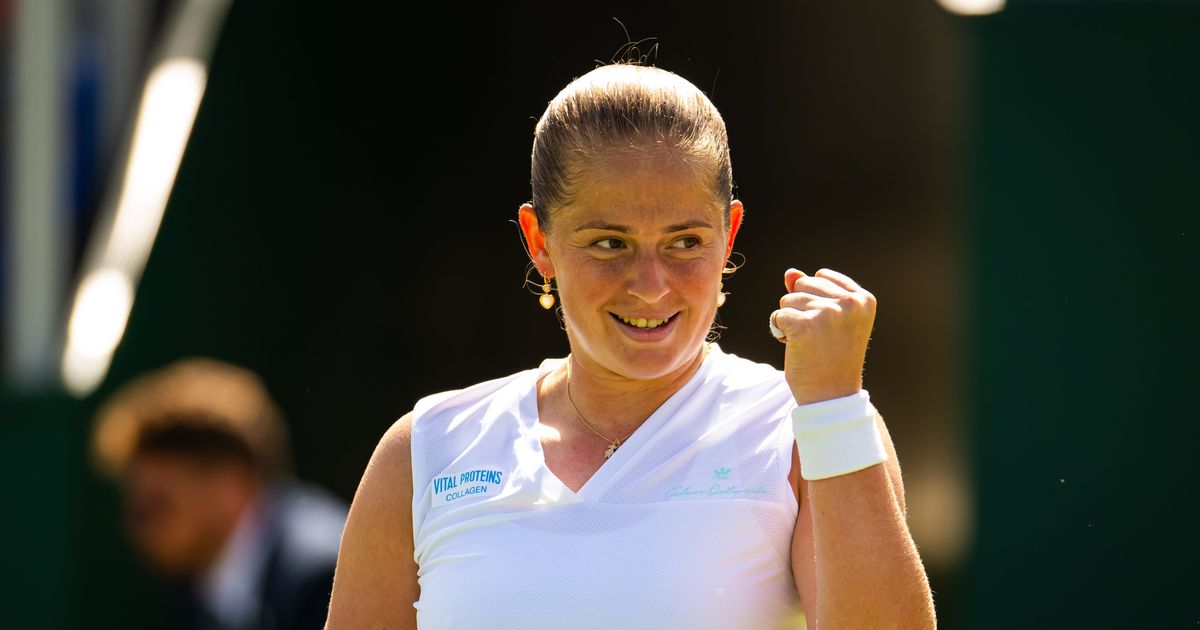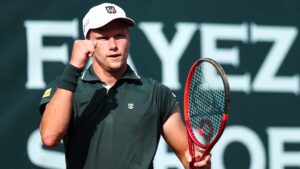
WIMBLEDON — Through the 56 years of tennis’s Open Era, the game has changed beyond measure. From the athleticism to the calendar, from game styles to career management, little about the sport as it is played today would be recognizable beyond its basic rules in 1968.
Wimbledon 2024: Scores | Draws | Order of play
One record has endured for all that time — and it could fall as soon as this week. No player, man or woman, has ever won Grand Slam titles with more than a five-year gap between them. The record is held by Virginia Wade, whose second major trophy at the 1972 Australian Open was followed five years and six months later by her third and last at Wimbledon 1977. On the men’s side, Arthur Ashe had the same gap between his second major at the 1970 Australian Open and his third at Wimbledon 1975.
Six further players also had a five-year drought between Grand Slam trophies: Arantxa Sánchez Vicario (Roland Garros 1989 to Roland Garros 1994), Boris Becker (Australian Open 1991 to Australian Open 1996), Mary Pierce (Australian Open 1995 to Roland Garros 2000), Marat Safin (US Open 2000 to Australian Open 2005), Svetlana Kuznetsova (US Open 2004 to Roland Garros 2009) and Roger Federer (Wimbledon 2012 to Australian Open 2017).
Across multiple generations, the wisdom is that if the window of your Slam-winning form has been shut down for five years, it’s shut for good. But at the quarterfinal stage of Wimbledon this year, one of three Grand Slam champions remaining in the draw is Jelena Ostapenko. It’s been seven years and one month since her first, and so far only, major title at Roland Garros 2017 — but she has been the most dominant player in the field so far, losing only 15 games in four matches.
It’s not just about Ostapenko, either. The record has come close to falling a number of times in recent years. Victoria Azarenka was two matches away from a 10-year gap when she reached last year’s Australian Open semifinals and one match from a seven-year gap when she was the 2020 US Open finalist. Had Venus Williams won the 2017 Australian Open final, it would have been 11 years since her last major title.
And going forward, if Bianca Andreescu, 24, does not win this year’s US Open, the Canadian will join Ostapenko as a leading contender to break the record.
For former Top 10 player Andrea Petkovic, a significant factor is the number of players in recent years who have won major titles young — and suddenly. Ostapenko turned 20 during her Roland Garros title run, and Andreescu won the 2019 US Open at 19 years old.
“When it’s players who win it young, they need time to digest being a Grand Slam champion,” Petkovic said at Wimbledon this week.
Former Roland Garros champion Francesca Schiavone agreed — and pointed out that for most players, winning a Slam title is the anomaly, not the norm.
“When you win a Slam, there is big work behind,” the she said. “It’s not simple to keep going to win the second Slam, the third Slam. You have to keep wanting to grow, you have to have a good team, you have to be healthy, everything has to be in good balance. It’s much easier to lose it than to win it.”
There’s another reason the five-year record is increasingly under threat, too. Miami tournament director and former ATP No.4 James Blake points out the longevity of players’ careers, particularly on the Hologic WTA Tour, has drastically increased over the past decade. As well as Ostapenko and Andreescu, a host of former major winners are still active over five years since their last Grand Slam title: Azarenka, Williams, Angelique Kerber, Petra Kvitova and Sloane Stephens among them.
“Now you’re seeing women playing after having kids, playing into their thirties,” Blake said. “It’s to do with how players are taking care of their bodies. The recovery, what they’re doing, and then the confidence to play longer.
“When I first started playing, we joked that we had to treat our careers like small businesses. Now, they’re treating their careers like large corporations. These players are creating so much of an economy that they need to be very serious and professional about their careers. And they are. And that’s why they’re having longer careers. That’s why the prize money has gone way up.
For Blake, the consensus that a player’s Slam-winning window is short no longer holds true. The window is longer than ever before and can reopen even after an extended period of seemingly being shut.
“I do think, at some point, there’ll be a player who drops back, maybe with a serious injury like Andreescu,” he said. “And OK, it takes them a little bit longer to get back, but they have the confidence to do it the right way, to build their fitness and mentality back up, and win a Slam six years or more after their first.”
But will it happen this Saturday? Blake and Petkovic disagree on that one.
“This week it’s going to be tough,” Blake said. “I still have it on [Elena] Rybakina’s racquet.”
Petkovic, though, has been won over by Ostapenko’s sheer élan at SW19 this fortnight.
“The record might be broken in the next five or six days with how Ostapenko has been playing,” Petkovic said. “Did you see her match point yesterday, with the sliced winner? Girlfriend is feeling confident! And if she’s feeling confident, I wouldn’t want to run into her in my draw.”
More from Wimbledon:
Source: https://www.wtatennis.com/news/4054535/could-jelena-ostapenko-break-an-open-era-record-this-wimbledon-


